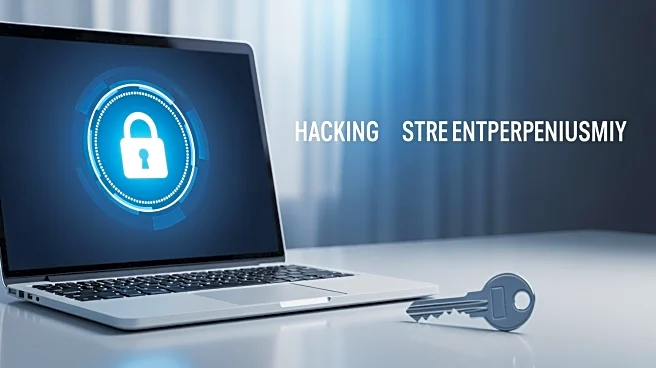What's Happening?
The tech industry is facing significant challenges in identity management, which have become a major cybersecurity risk. According to research from the Enterprise Strategy Group, it takes an average of
11 hours to resolve a single identity-related security incident. This delay allows hackers ample time to exploit networks, escalate privileges, and steal data. The fragmentation of modern infrastructure, with various platforms and tools operating independently, complicates the process of tracking and managing identities. This has led to a rise in identity-based breaches, with compromised credentials driving over 20% of data breaches. The industry has mistakenly equated identity with credentials, leading to a flawed identity management system that attackers can easily exploit.
Why It's Important?
The mismanagement of identity in the tech industry has far-reaching implications for cybersecurity. The prolonged time required to address identity-related incidents exposes companies to significant risks, as attackers can operate undetected for extended periods. This situation is exacerbated by the fragmented nature of infrastructure, which makes it difficult to obtain a comprehensive view of identity activities. The rise in identity-based breaches poses a threat to data privacy and security, with compromised credentials becoming a common tool for attackers. The industry's current approach to identity management is inadequate, necessitating a redefinition of identity in the computing world to enhance security and reduce vulnerabilities.
What's Next?
To address these challenges, the tech industry must redefine identity management by moving away from equating identity with credentials. Implementing zero-trust architectures and hardware-backed keys can provide a more secure and unified approach to identity management. This involves issuing unique identities to all entities within an infrastructure, ensuring that each identity is cryptographically signed and bound to hardware. By adopting this model, the industry can create a borderless and secure environment, reducing the risk of identity-based breaches and improving overall cybersecurity. However, achieving this will require industry-wide collaboration and a shift in how identity is perceived and managed.
Beyond the Headlines
The current identity management issues highlight the need for a cultural shift in how the tech industry approaches cybersecurity. The reliance on fragmented systems and tools has created a complex and inefficient environment that hinders effective security measures. By redefining identity and adopting a unified approach, the industry can enhance security and reduce the risk of breaches. This shift will also require changes in organizational practices and policies, as well as increased investment in secure identity management solutions. The move towards a borderless and secure infrastructure could significantly improve the industry's ability to protect sensitive data and maintain trust with users.











